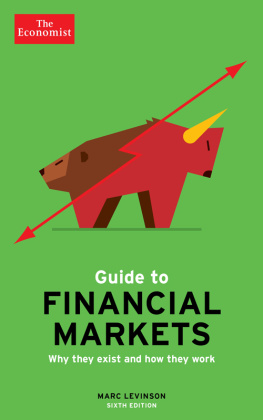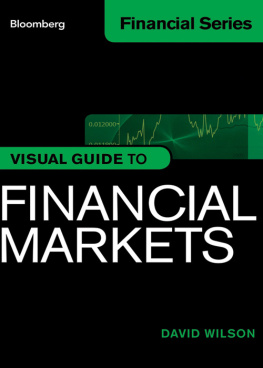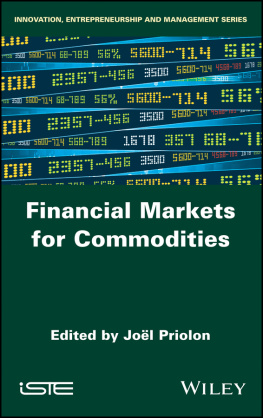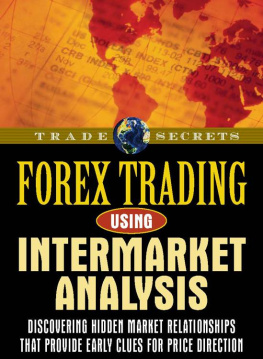GUIDE TO FINANCIAL MARKETS
OTHER ECONOMIST BOOKS
Guide to Analysing Companies
Guide to Business Modelling
Guide to Business Planning
Guide to Cash Management
Guide to Commodities
Guide to Decision Making
Guide to Economic Indicators
Guide to Emerging Markets
Guide to the European Union
Guide to Financial Management
Guide to Hedge Funds
Guide to Investment Strategy
Guide to Management Ideas and Gurus
Guide to Managing Growth
Guide to Organisation Design
Guide to Project Management
Guide to Supply Chain Management
Numbers Guide
Style Guide
Book of Business Quotations
Book of Isms
Book of Obituaries
Brands and Branding
Business Consulting
Business Strategy
Buying Professional Services
Doing Business in China
Economics
Managing Talent
Managing Uncertainty
Marketing
Marketing for Growth
Megachange the world in 2050
Modern Warfare, Intelligence and Deterrence
Organisation Culture
Successful Strategy Execution
The World of Business
Directors: an AZ Guide
Economics: an AZ Guide
Investment: an AZ Guide
Negotiation: an AZ Guide
Pocket World in Figures

GUIDE TO FINANCIAL
MARKETS
Why they exist and how they work
Sixth edition
Marc Levinson
THE ECONOMIST IN ASSOCIATION WITH PROFILE BOOKS LTD AND PUBLIC AFFAIRS
Copyright The Economist Newspaper Ltd, 1999, 2000, 2002, 2006, 2010, 2014Text copyright Marc Levinson, 2014
First published in 1999 by Profile Books Ltd. in Great Britain.
Published in 2014 in the United States by PublicAffairs, a Member of the PerseusBooks Group
All rights reserved.
No part of this book may be reproduced, stored in or introduced into a retrievalsystem, or transmitted, in any form or by any means (electronic, mechanical,photocopying, recording or otherwise), without the prior written permission ofboth the copyright owner and the publisher of this book, except in the case ofbrief quotations embodied in critical articles and reviews. For information, addressPublicAffairs, 250 West 57th Street, 15th Floor, New York, NY 10107.
The greatest care has been taken in compiling this book. However, no responsibility can be accepted by the publishers or compilers for the accuracy of the information presented.
Where opinion is expressed it is that of the author and does not necessarily coincide with the editorial views of The Economist Newspaper.
While every effort has been made to contact copyright-holders of material produced or cited in this book, in the case of those it has not been possible to contact successfully, the author and publishers will be glad to make amendments in further editions.
PublicAffairs books are available at special discounts for bulk purchases in the U.S.by corporations, institutions, and other organizations. For more information, pleasecontact the Special Markets Department at the Perseus Books Group, 2300 ChestnutStreet, Suite 200, Philadelphia, PA 19103, call (800) 810-4145, ext. 5000, or e-mailspecial.markets@perseusbooks.com.
Print ISBN: 978-1-61039-389-8
ebook ISBN: 978-1-61039-390-4
First Edition
10 9 8 7 6 5 4 3 2 1
Contents
1 Why markets matter
THE EURO IS SLIGHTLY HIGHER against the yen. The Dow Jones Industrial Average is off 18 points in active trading. A Chinese airline loses millions of dollars with derivatives. Following the Bank of Englands decision to lower its base rate, monthly mortgage payments are set to fall.
All these events are examples of financial markets at work. That markets exercise enormous influence over modern life comes as no news. But although people around the world speak glibly of Wall Street, the bond market and the currency markets, the meanings they attach to these time-worn phrases are often vague and usually out of date. This book explains the purposes different financial markets serve and clarifies the way they work. It cannot tell you whether your investment portfolio is likely to rise or to fall in value. But it may help you understand how its value is determined, and how the different securities in it are created and traded.
In the beginning
The word market usually conjures up an image of the bustling, paper-strewn floor of the New York Stock Exchange or of traders motioning frantically in the futures pits of Chicago. These images themselves are out of date, as almost all of the dealing once done face to face is now handled computer to computer, often with minimal human intervention. And formal exchanges such as these are only one aspect of the financial markets, and far from the most important one. There were financial markets long before there were exchanges and, in fact, long before there was organised trading of any sort.
Financial markets have been around ever since mankind settled down to growing crops and trading them with others. After a bad harvest, those early farmers would have needed to obtain seed for the next seasons planting, and perhaps to get food to see their families through. Both of these transactions would have required them to obtain credit from others with seed or food to spare. After a good harvest, the farmers would have had to decide whether to trade away their surplus immediately or to store it, a choice that any 21st-century commodities trader would find familiar. The amount of fish those early farmers could obtain for a basket of cassava would have varied day by day, depending upon the catch, the harvest and the weather; in short, their exchange rates were volatile.
The independent decisions of all of those farmers constituted a basic financial market, and that market fulfilled many of the same purposes as financial markets do today.
What do markets do?
Financial markets take many different forms and operate in diverse ways. But all of them, whether highly organised, like the London Stock Exchange, or highly informal, like the money changers on the street corners of some African cities, serve the same basic functions.
- Price setting. The value of an ounce of gold or a share of stock is no more, and no less, than what someone is willing to pay to own it. Markets provide price discovery, a way to determine the relative values of different items, based upon the prices at which individuals are willing to buy and sell them.
- Asset valuation. Market prices offer the best way to determine the value of a firm or of the firms assets, or property. This is important not only to those buying and selling businesses, but also to regulators. An insurer, for example, may appear strong if it values the securities it owns at the prices it paid for them years ago, but the relevant question for judging its solvency is what prices those securities could be sold for if it needed cash to pay claims today.
- Arbitrage. In countries with poorly developed financial markets, commodities and currencies may trade at very different prices in different locations. As traders in financial markets attempt to profit from these divergences, prices move towards a uniform level, making the entire economy more efficient.
- Raising capital. Firms often require funds to build new facilities, replace machinery or expand their business in other ways. Shares, bonds and other types of financial instruments make this possible. The financial markets are also an important source of capital for individuals who wish to buy homes or cars, or even to make credit-card purchases.
- Commercial transactions.
Next page











